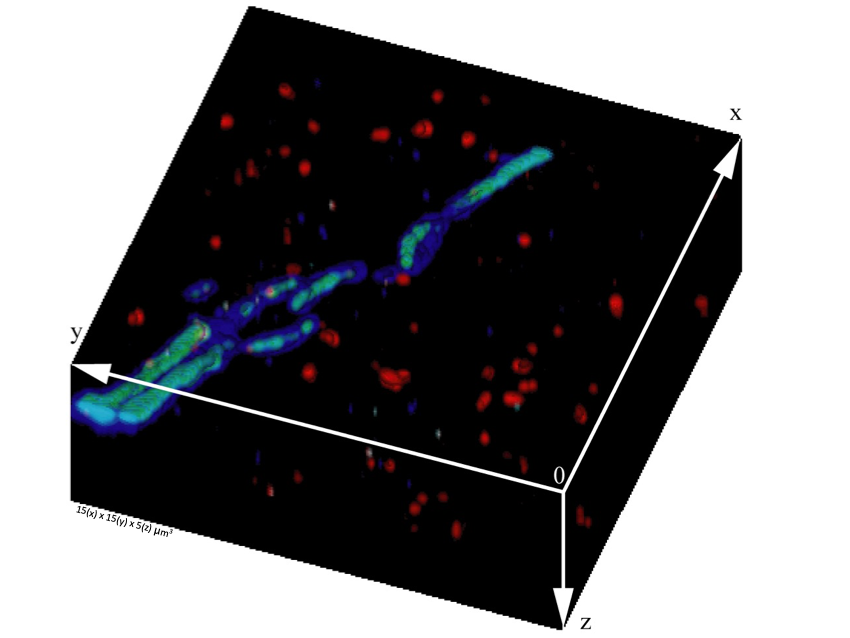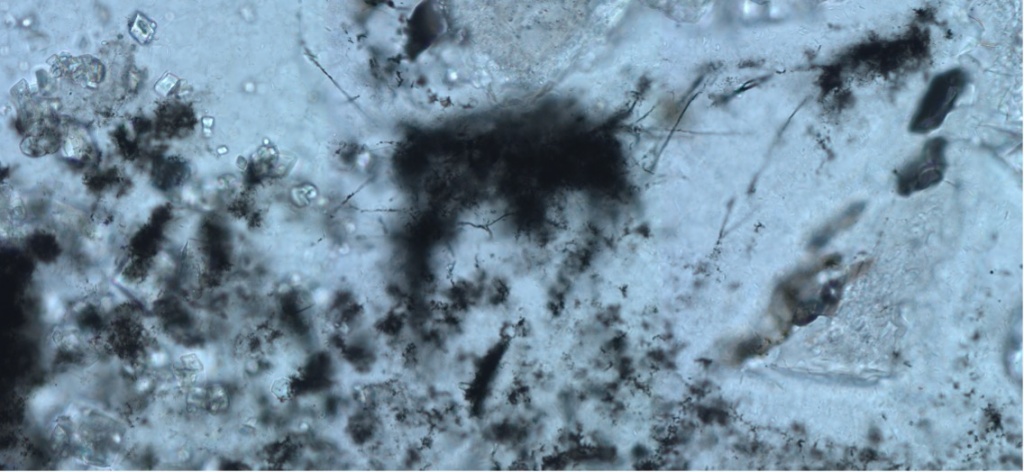Looking for the earliest forms of life on Earth
Barbara Cavalazzi (University of Bologna) describes how an international effort has identified some of the earliest examples of life on Earth.
Read article in the fully formatted PDF of the Europlanet Magazine.
While Earth may have been habitable within the first billion years after the planet formed, the exact nature of the earliest forms of life (including the cellular constituents, metabolic pathways, and the habitats occupied on a local and global scale), remain largely unknown.
On Earth today, sub-surface habitats, heated by volcanic activity, are populated by microbes. These mostly include single-celled organisms called Archaea prokaryotes, which can live in the absence of oxygen and use methane for their metabolism. These environments are likely to have hosted some of Earth’s earliest microbial ecosystems. The interaction of cooler seawater with warmer subsurface hydrothermal fluids would have created a rich chemical soup, and variations in conditions could have led to multiple potential micro-habitats. However, although we know that Archaea prokaryotes can be fossilised, we have found extremely limited direct examples to date.
The Onverwacht Group in the Barberton Greenstone Belt in South Africa, near the border with Eswatini and Mozambique, contains some of the oldest and best-preserved sedimentary rocks found on our planet. In July 2021, we published a paper in Science Advances with the results of a study of chert (fine-grained, microcrystalline quartz) deposits collected near the base of the Kromberg Formation of the Onverwacht Group, which formed 3.42 billion years ago. The samples contained evidence of ancient hydrothermal veins that would have been located below the floor of a shallow ocean. Over time, the hydrothermal veins have been filled in with carbonate and chert.
Within these samples, we found exceptionally well-preserved evidence of fossilised Archaea prokaryotes that appear to have flourished along the walls of cavities created by warm water from hydrothermal systems a few meters below the seafloor. The thread-like structures of the microfossils were embedded in two thin layers (around a thousandth to ten-thousandth of a centimetre in depth) of the chert infill. Our study is the result of 15 years of work to better understand the geology and geological environment, which ended in the finding of the right sample. This was followed by an international effort by the team using state-of-the-art facilities around the world to gather converging and mutually supportive evidence that the structures we found were of biological origin.
In 2017, I visited the NanoSIMS facility at the Open University, funded through Europlanet’s Transnational Access programme, to investigate the ratios of carbon, silicon and oxygen in the structures, which could provide evidence that they were indeed microfossils. Although these results were promising, the samples analysed did not contain sufficient carbonaceous material to obtain a significant carbon-isotope ratio that would give us a definitive answer.
The final published study combined results from facilities for optical and electron microscopy in the US to observe the structures, as well as Time-of-Flight Secondary Ion Mass Spectrometry (ToF SIMS) in the US and Italy, Raman microspectroscopy imaging in South Africa, Dual-Beam Focused Ion Beam Scanning Electron Microscopes in the US and Italy, and micro and nano-X-ray imaging in France, which together enabled us to analyse the chemical composition, map the location of the structures, and search for biological signatures.
We found that the microfossils had a carbon-rich outer sheath and a chemically and structurally distinct core, consistent with a cell wall or membrane around intracellular or cytoplasmic matter. Filaments appear to have been clustered at the tips of pointed hollows in the walls of the hydrothermal cavity, and scattered individually across the cavity floor. Chemical analysis shows that the filaments include most of the major elements needed for life. The concentrations of nickel in organic compounds provide further evidence of primordial metabolisms and are consistent with nickel-content found in modern Archaea prokaryotes.
These microfossils are the oldest evidence for this type of life and expand the frontiers of potentially habitable environments on the early Earth, as well as other planets such as Mars. Our findings extend the record of Archaea fossils for the first time into the era when life first emerged on Earth.
‘Cellular remains in a ~3.42 billion-year-old subseafloor hydrothermal environment’, B. Cavalazzi, L. Lemelle, A. Simionovici, S.L. Cady, M.J. Russell, E. Bailo, R. Canteri, E. Enrico, A. Manceau, A. Maris, M. Salomé, E. Thomassot, N. Bouden, R. Tucoulou, A. Hofmann, Science Advances, 2021, DOI: 10.1126/sciadv.abf3963.
The research was carried out with the support of Europlanet 2020 RI, which received funding from the European Union’s Horizon 2020 programme (Grant No 654208).




